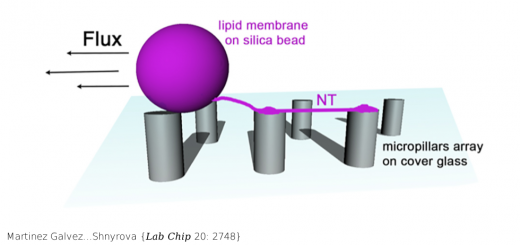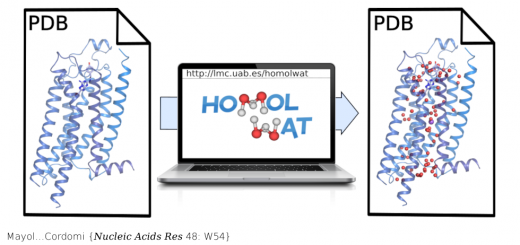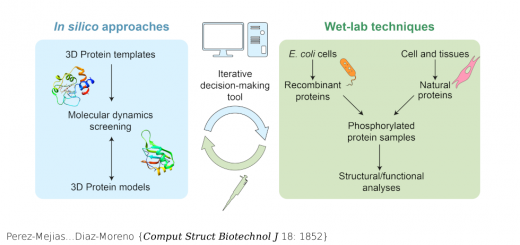Photoexcitation of the P4(480) State Induces a Secondary Photocycle That Potentially Desensitizes Channelrhodopsin-2
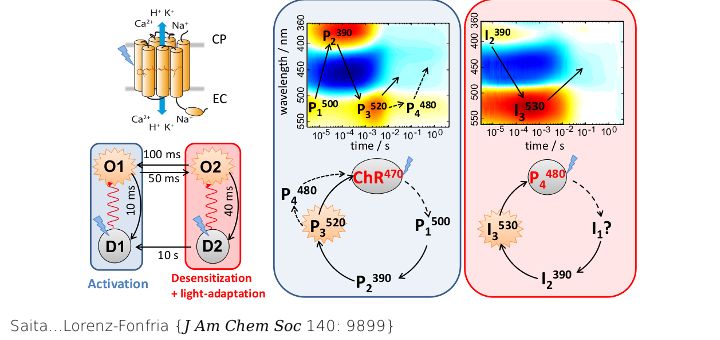
We have characterized the photocycle of the P4(480) intermediate of channelrhodopsin-2, and linked it to the secondary photocycle responsible for the desensitization and light-adaptation of the channel activity.
Saita M, Pranga-Sellnau F, Resler T, Schlesinger R, Heberle J, Lorenz-Fonfria VA.
J Am Chem Soc 2018 Aug; 140: 9899.
Channelrhodopsins (ChRs) are light-gated cation channels. In spite of their wide use to activate neurons with light, the photocurrents of ChRs rapidly decay in intensity under both continuous illumination and fast trains of light pulses, broadly referred to as desensitization. This undesirable phenomenon has been explained by two interconnected photocycles, each of them containing a nonconductive dark state (D1 and D2) and a conductive state (O1 and O2). While the D1 and O1 states correspond to the dark-state and P3(520) intermediate of the primary all- trans photocycle of ChR2, the molecular identity of D2 and O2 remains unclear. We show that P4(480), the last intermediate of the all- trans photocycle, is photoactive. Its photocycle, characterized by time-resolved UV/vis spectroscopy, contains a red-shifted intermediate, I3(530). Our results indicate that the D2 and O2 states correspond to the P4(480) and I3(530) intermediates, connecting desensitization of ChR2 with the photochemical properties of the P4(480) intermediate.
PubMed: 30036055. Doi: 10.1021/jacs.8b03931.
